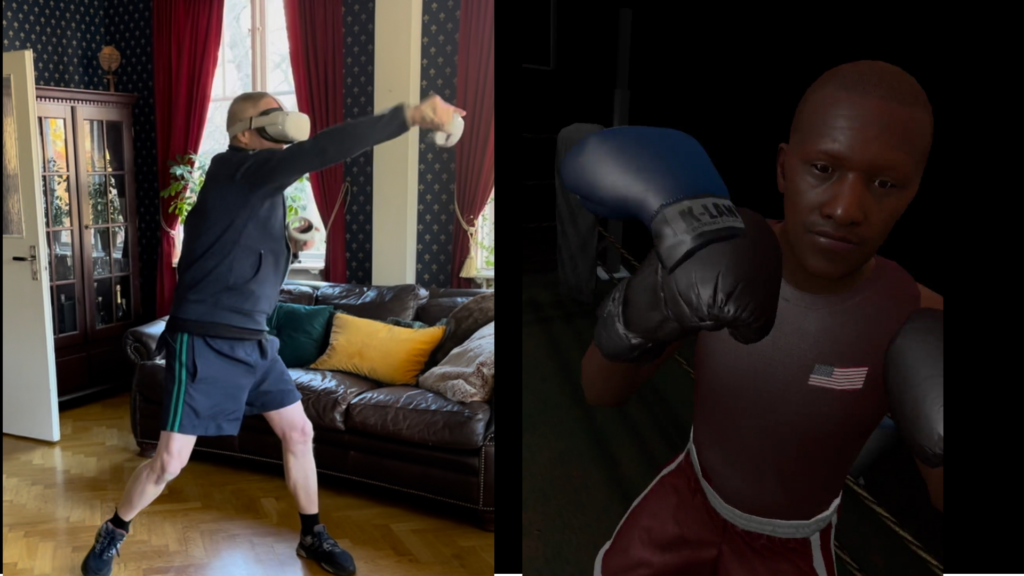Introduction
Virtual Reality exercising has emerged as a groundbreaking technology that transcends the boundaries of entertainment and offers innovative solutions across various domains. In recent years, VR has made significant strides in the realm of fitness and sports training. One particular area where VR has showcased remarkable potential is in learning boxing and enhancing exercise routines.

Immersive Learning Environment
Traditional methods of learning boxing involve one-on-one training with an instructor or shadowboxing in front of a mirror. While these approaches are valuable, they may lack the immersive experience necessary to truly understand the nuances of proper technique. Virtual reality fills this gap by creating a virtual arena where users can learn and practice boxing moves in a lifelike setting.
Real-Time Feedback and Analysis
One of the key advantages of incorporating VR into boxing training is the instant feedback it provides. VR systems can be equipped with motion sensors and cameras that track the user’s movements in real time. This data is then analyzed and compared to optimal boxing techniques. Users receive immediate feedback on their stance, punches, and defensive maneuvers. This iterative feedback loop accelerates the learning curve, helping users make adjustments and improvements with each session. Additionally, this level of analysis fosters a deeper understanding of the biomechanics involved in boxing, which can lead to more efficient and precise movements.
Personalized Workouts and Progress Tracking
Virtual reality platforms for boxing training often come with customizable workout routines. Users can select their fitness goals, whether it’s improving punching speed, enhancing endurance, or refining defensive skills. The VR system then tailors workouts based on these goals, providing a personalized and challenging experience. As users engage in these workouts, their progress is meticulously tracked and stored. This data-driven approach enables users to monitor their improvements over time, thus enhancing motivation and accountability.
Variety and Engagement
Repetitive exercise routines can lead to monotony and reduced enthusiasm. VR addresses this challenge by offering a wide range of scenarios and challenges. Users can engage in virtual sparring sessions against opponents of varying skill levels, participate in realistic simulations of boxing matches, and even train in unique environments. This variety keeps workouts engaging and exciting, reducing the risk of boredom and dropout rates commonly associated with traditional exercise routines.
Accessible and Safe Learning
Learning boxing and engaging in intense workout sessions can be physically demanding and sometimes even risky, especially for beginners. VR provides a safe and controlled environment for users to practice without the risk of injury. Beginners can learn fundamental techniques at their own pace, gradually building strength and skill without the pressure of physical contact.
Conclusion
Virtual reality is revolutionizing the way we approach learning and fitness, particularly in the realm of boxing training and exercise. Its immersive environment, real-time feedback, personalized workouts, and engaging scenarios make it an ideal platform for both beginners and experienced individuals seeking to enhance their boxing skills and fitness levels. As technology continues to advance, we can expect even more sophisticated VR solutions that further empower individuals to achieve their fitness goals and master the art of boxing.
Virtual Reality (VR) FAQ
What is Virtual reality explain?
Virtual Reality (VR) refers to a technology that creates a simulated and immersive digital environment, allowing users to interact and engage with computer-generated worlds or scenarios that seem realistic and three-dimensional. The goal of VR is to trick the user’s senses—primarily sight and sound—into believing they are physically present in the virtual environment, even though they are actually experiencing it through a headset or other devices.
What Are the 3 Types of Virtual Reality?
Virtual Reality (VR) can be categorized into three main types based on the level of immersion and the technology used to create the virtual experience. These three types of VR are:
1.Non-Immersive Virtual Reality (Desktop VR): Non-immersive VR, also known as desktop or screen-based VR, is the least immersive type of virtual reality experience. In this type, users interact with virtual environments and objects through a regular computer monitor or display, similar to playing a video game.
2. Semi-Immersive Virtual Reality (CAVE Systems, VR Pods): Semi-immersive VR offers a higher level of immersion compared to non-immersive VR. In this type, users typically step into a dedicated physical space that enhances the virtual experience. A popular example is the CAVE (Cave Automatic Virtual Environment) system, which consists of multiple walls and a floor with projectors displaying the virtual environment.
3. Fully Immersive Virtual Reality (Headset-Based VR): Fully immersive VR, often associated with the classic idea of virtual reality, offers the highest level of immersion. Users wear headsets that completely cover their field of vision, blocking out the real-world environment. These headsets often have built-in displays, motion sensors, and audio systems to create a convincing virtual experience.
Can you exercise with virtual reality?
Virtual reality (VR) has opened up exciting new possibilities for exercising and staying fit. VR provides an immersive and engaging environment that can make workouts more enjoyable and motivating. VR boxing apps, like True Boxing VR, allow you to practice your punches, and defensive moves in a virtual environment. These workouts can be intense and effective for building strength, endurance, and agility.
It’s important to note that while VR workouts can be fun and effective, they should be approached with safety in mind. Pay attention to your body, stay hydrated, and make sure you have enough space to move around safely. Also, consult with a medical professional before starting any new exercise regimen, especially if you have any pre-existing health conditions.